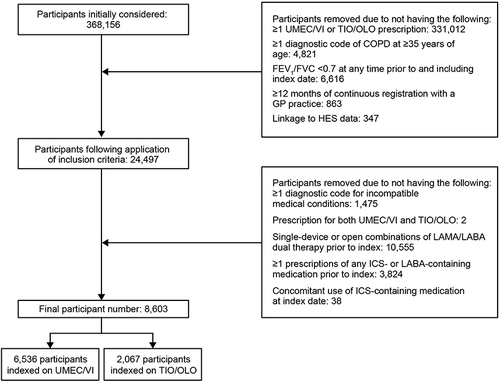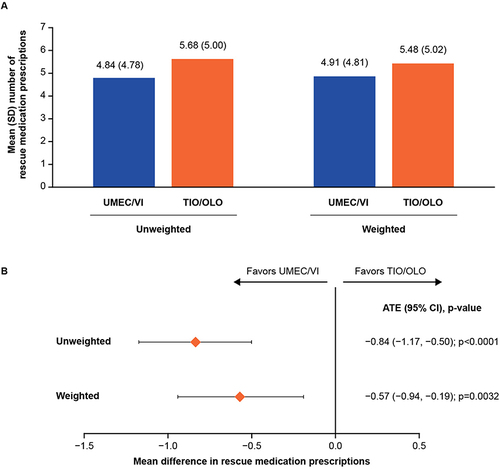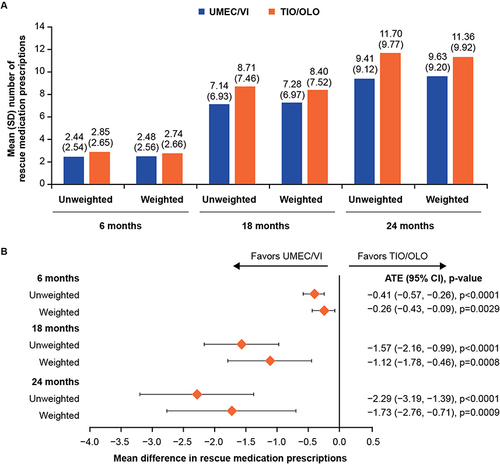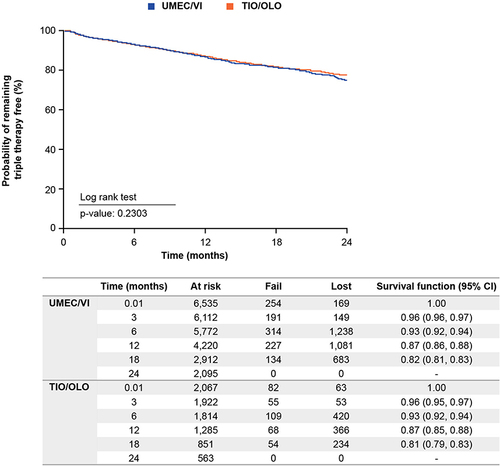Figures & data
Figure 1 Study design. aThe first UMEC/VI or TIO/OLO prescription within the indexing period was defined as the index date. Only patients with no LAMA/LABA prescriptions prior to the index date were included in the analysis.

Figure 2 Sample attrition.

Table 1 Patient Demographics and Baseline Characteristics
Figure 3 (A) Mean number of rescue medication prescriptions between patients newly initiating UMEC/VI versus TIO/OLO in the 12 months following treatment initiation and (B) treatment differences for rescue medication prescriptions outcome in the ITT analysis.

Figure 4 (A) Mean number of rescue medication prescriptions between patients newly initiating UMEC/VI versus TIO/OLO in the 6-, 18- and 24- months following treatment initiation and (B) Treatment differences for rescue medication prescriptions outcome in the ITT analysis.

Table 2 Adherent Patients (PDC ≥80%) at 6-, 12-, 18- and 24-Months Post-Index Without Stockpiling
Table 3 Mean Number of Rescue Medication Prescriptions for Patients Newly Initiating UMEC/VI versus TIO/OLO in the 12 Months Following Treatment Initiation, Stratified by Adherence (PDC < 80%, PDC ≥ 80%), Without Stockpiling

